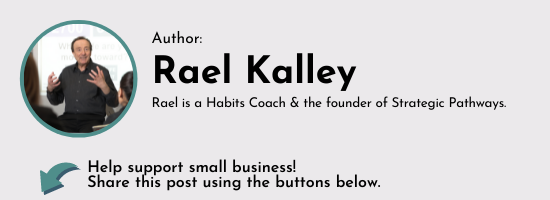How to Eliminate Distractions to Improve Your Focus
Bright shiny objects. They’re everywhere. They come in all shapes, sizes and forms, and they have one thing in common: They’re distractions that rob your focus.
Perhaps an email, a phone call, a text, Facebook, Twitter, Instagram, LinkedIn, any of the other countless websites out there vying for your attention, a colleague knocking on your door with the old “Do you have a moment?” request. As an aside, that question is the biggest lie in the world as never, not even once in the history of the universe, has it ever been a single moment.
But I digress. All of the above constitute a few of the many bright shining objects that grab our attention and prevent us from staying focused on a task at hand.
55,000 Thoughts
Our ability to focus, and remain focusing on a particular task, is made even more challenging by the 55,000 or more thoughts that are estimated to pass through our heads each day.
Most would agree that the notion of multitasking is more mythical than factual. Certainly, we can perform more than one function at the same time, e.g. we can engage in a conversation while eating a meal, but, what we cannot do is focus on more than one thought at a time. For example, try holding a conversation while reading a book and you quickly learn you can’t do both at the same time.
Our ability to focus is far more dependent on keeping interrupting thoughts out of our minds than it is allowing competing ones to enter. This means that improving focus requires, among other things, a complete re-organization of how we do business.
Those external bright shiny objects above serve not only to sever our focus, capture our attention, break our train of thought, they also frequently induce amnesia when we cannot remember what we were focusing on/talking about/doing once we have addressed the interruption and attempted to regain our earlier topic of focus.
A study commissioned several years ago by a well-known Vancouver-based time and productivity management company suggested that when we return to our topic of focus after having dealt with an interruption, it will take approximately 16 minutes to regain the level and intensity of focus we had prior to the interruption.
Assuming this to be true, and assuming 12 interruptions each day which is probably, at best, a conservative estimate, it is easy to see how we can waste upwards of three hours each day simply trying to get back to where we were before a bright shiny object, or a thought flashing through our head, diverted our attention and robbed us of rapid progress.
So how do we combat this constant hacking of our mind space?
It All Comes Down to Discipline
Disciplined scheduling of our activities, with singularity of purpose, seems to go a long way to staying focused and on track. I constantly encourage my clients to learn the value of focusing, which means doing only one thing at a time and ignoring everything else. This means phones go unanswered, emails unchecked, texts not responded to, social media ignored and the words “Not right now” instead of “Yes” to be used in response to the “Do you have a moment?” question.
Remember, the task is not so much as keeping interruptions out as it is not letting them in. Few of us are that important that lives will be lost if calls, emails, texts or other means of messaging are not met with instant response. And with regard to the constant noise in our heads, the same principle applies.
How to Eliminate Distractions to Improve Your Focus
A solid, proven technique for improving our focus and closing all entrances to competing thoughts is to practice for very short periods and then slowly increase the time as you become more adept at single-thought focusing. For example, pick a topic you would like to focus on, set a timer for two minutes and go for it. During that time, gently push aside any competing thoughts and go back to the topic you chose.
Try doing this a couple times today and you will be amazed at how quickly you will be able stay focused for longer and longer portions of the two minutes. Then, increase the time to three minutes and then four as your confidence builds, and your focus increases.
Be patient with yourself. Many of us have spent our lifetime focusing in tiny spurts, and what we are now doing is training our brains to do things a different way. A way that, if you commit to changing what you focus on and how you think, WILL bring a different level of consciousness and clarity to how you live.
Sounds like a plan.
Let’s make a habit of meeting like this.


